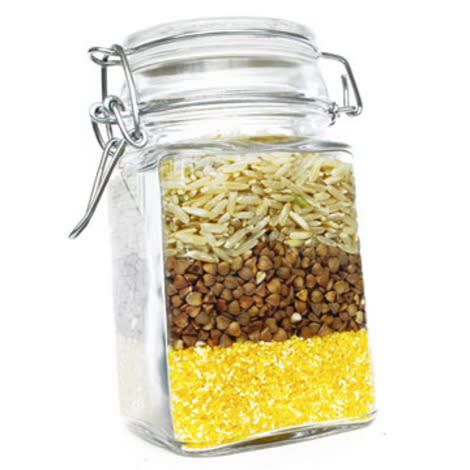To Be or Not to Be Gluten-Free: Should You Make the Switch?

By Leslie Goldman
What do celebs like Zooey Deschanel, Emmy Rossum, Elisabeth Hasselbeck and Chelsea Clinton have in common? They all follow gluten-free diets, thanks to severe wheat allergies that, if left untreated, can result in bloating, diarrhea, fatigue, malnourishment and even infertility and osteoporosis.
"Going g-free" has been trendy for a few years now, with proponents claiming that ditching wheat can melt away pounds, elevate sports performance and evaporate mental fogginess. The industry has exploded, mushrooming 27 percent since 2009 and surpassing $6 billion in sales in 2011, according to Mintel research. "Gluten-free is the new low-carb," says Wendy Bazilian, DrPH, RD, author of The SuperFoodsRx Diet (Rodale) ?and a nutrition advisor at Golden Door Fitness Resort and Spa in San Marcos, Calif. But unless you are one of the 1 percent of Americans who truly suffer from actual Celiac disease, an autoimmune disorder where the body attacks itself in the presence of gluten - a protein component found in wheat, rye and barley - or the 5 to 8 percent who are gluten-intolerant, eradicating gluten from your diet will not help you lose weight or boost energy. In fact, "many gluten-free products are packed with sugar and fat," Bazilian warns.
Related: Gluten-Free Breakfast, Lunch and Dinner Recipes
The Goods on Gluten
Gluten is part of a protein found in three grains -- wheat, rye and barley -- which lends elasticity and chew to products like bread and pizza dough. In healthy individuals, these foods pose no problem. But in those with wheat sensitivities or allergies, gluten damages parts of the small intestine called villi, finger-like projections lining the gut that absorb nutrients. "Imagine your gut is lined with a shag rug," Bazilian suggests. "Those are the villi. Over time, Celiac disease flattens the rug, making it smooth like linoleum, so they can't hang on to nutrients."
Unfortunately, wheat is such a prominent part of the American diet that it can be extremely difficult to eradicate. Besides obvious culprits, like wheat bread, gluten hides out in soy sauce, malt vinegar, couscous, beer and wine, licorice, certain broths and energy bars, even communion wafers. Cousins of wheat, including spelt, kamut, farrow, durum, semolina and triticale, will also trigger allergies. Oats don't contain gluten but may be contaminated during processing.
If you're gluten intolerant, you'll know it, experiencing nasty GI symptoms almost immediately after ingesting wheat, barley or rye. Celiac disease, on the other hand, may or may not result in bloating, gassiness, constipation or diarrhea. Instead, you may be irritable or depressed, or experience joint pain, a skin rash, anemia, mouth sores or weight loss. A gastroenterologist or internist can diagnose gluten allergies through an intestinal biopsy and blood work. The next step is to meet with a dietitian who can help you chart out a meal plan.
Related: 9 Foolproof Cooking Tips to Be a Top Chef
How to Eat Gluten-Free
The good news: "When you eat a whole foods diet and have control over ingredients, the world is your oyster when it comes to eating gluten-free," Bazilian promises. (Just don't eat oyster crackers -- they contain wheat!) The trick is to shop the perimeter of your grocery store, where you'll find fruits and veggies, chicken, fish and lean meat, low-fat milk and yogurt -- all naturally devoid of gluten. "Plus, the trendy ancient grains that are all the rage right now, like quinoa, black rice and amaranth, are gluten-free." Corn, beans, potatoes, millet, gluten-free oats, buckwheat (even though it has the word "wheat" in it) and all kinds of rice are all still on the table, too.
Dining out or consuming packaged products gets far trickier. While it's relatively easy to scan a label for wheat, barley or rye, gluten can masquerade as other common ingredients, such as enriched bleached flour, semolina and Brewer's yeast. Luckily, most supermarkets now offer special gluten-free sections and their web sites will provide safe shopping lists. Still, "cooking from scratch is the safest," says Bazilian. "When you're eating out -- sauces and condiments are especially tricky -- or buying products with labels, all bets are off."
If you truly do suffer from a gluten allergy, eliminating it from your diet will offer welcomed relief from symptoms, including more energy and fewer GI complaints. "But," Bazilian warns, "if you don't have an actual allergy or intolerance, it won't make you lose weight and it won't enhance sports performance. If it does, it's probably because you're eating more quality foods, like quinoa instead of white rice."
Now some important notes: People often mistake going gluten-free for eating grain-free, which can result in inadequate intake of iron, fiber and B vitamins, important for cellular functioning and metabolism. Packaged gluten-free products are also high in fat, trans fat and sugar, and can actually lead to weight gain. As with all processed foods, pick a natural source over the packaged stuff.
More from FITNESS Magazine:
14 Diet-Friendly Vegetarian Meals
Quality Quinoa: 13 Healthy, Easy-to-Make Recipes
Eat All Day and Never Get Fat
